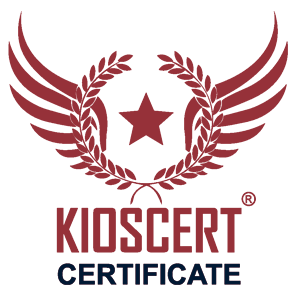
Quality Management Model in Welding Fabrication
Welding operations are one of the most critical manufacturing techniques used to assemble metal structures. Therefore, quality management of welded fabrication plays a central role in industrial production processes. The ISO 3834-2 standard offers a quality management model developed to enhance the quality level of companies performing welded fabrication, minimize errors, and gain international reliability. The ISO 3834 series generally contains three levels: ISO 3834-2 (comprehensive quality requirements), ISO 3834-3 (standard quality requirements), and ISO 3834-4 (basic quality requirements). Among these, ISO 3834-2 is the most comprehensive and is mandatory or preferred especially in high-safety fields such as defense industry, rail systems, pressure vessels, shipbuilding, and energy sector.
Holding this certificate does not only mean quality production; it also demonstrates to customers, suppliers, and official authorities that a reliable certification process is being conducted. ISO 3834-2 includes a broad control and record mechanism ranging from welding procedures and personnel training to inspection and testing of welded products and technical documentation. Moreover, it is recommended to integrate with quality management systems; thus, it is designed to be compatible with ISO 9001. Practices such as planning welding operations, defining conformity assessment methods, and establishing traceability systems are among the fundamental building blocks of this quality model.
Tip
If your company performs welded fabrication and you want to certify safety, compliance, and quality conditions in exported products, ISO 3834-2 level can be your strongest assurance tool.
Which Sectors Does ISO 3834-2 Cover?
Due to its comprehensive quality requirements, the ISO 3834-2 certificate is not limited to the general metal fabrication sector. On the contrary, it has become mandatory especially in sectors requiring high sensitivity in terms of safety, durability, and regulatory compliance. For example, production of railway vehicles is subject to both ISO 15085 and ISO 3834-2 certification. Similarly, the basic quality criteria mandated by international classification societies in shipbuilding are founded on this certificate. Companies operating in pressure vessels, pipelines, power plants, wind turbines, heavy machinery manufacturing, and nuclear industry are expected to secure their quality processes internationally with the ISO 3834-2 certificate.
Highlighted Sectors
- Railway and metro vehicle manufacturing
- Shipbuilding and offshore platforms
- Pressure vessels and piping systems
- Energy and power plants
- Construction machinery and crane systems
- Petrochemical and nuclear facilities
Welding Procedure Approval and Personnel Competence
At the core of the ISO 3834-2 certificate is the conformity approval of welding procedures applied by the company and the competence of welding personnel. In this context, procedure tests must be conducted according to applicable standards for each welding method, and these procedures must be approved in compliance with relevant international norms. Welding procedure qualification records (WPQR) and welder qualification tests (WQT) form the foundation of this process. Welders must be certified according to standards such as EN ISO 9606-1. Likewise, verification of the welding procedure is performed using technical references like EN ISO 15614.
| Control Area | Required Certification |
|---|---|
| Welding Methods | WPQR (Welding Procedure Qualification Record) |
| Welding Operators | WQT (Welder Qualification Test) - ISO 9606-1 |
| Technical Responsible | Welding coordinator or responsible engineer |
Regular review of these certificates and monitoring their validity periods is also an integral part of quality management. Especially in large-scale projects, continuity of personnel competence guarantees error-free welded fabrication. Having a qualified welding workforce not only meets certification requirements but also prevents costly mistakes.
Welding Instructions and Technical Documents
One of the most important building blocks of the ISO 3834-2 standard is the proper and regular preparation of all technical documentation related to welding processes. These documents ensure conformity to the standard and traceability of production. Welding Procedure Specifications (WPS) are detailed technical documents that define how the welding process should be applied. Parameters such as welding method, filler metal type, heat treatment details, welding position, preheating, and cooling are included in this document. These instructions should be fully understood not only by the technical team but also by production supervisors and quality teams.
Additionally, project-specific technical documents – drawings, control plans, inspection criteria – must be fully prepared. These documents minimize error sources in the quality control cycle. ISO 3834-2 requires not only the presence of these documents but also their effective use and continuous updating. Proper follow-up of production plans and revision management necessitate a professional approach in managing these documents.
Key Points When Preparing WPS
- Welding method and parameters must be fully defined
- Appropriate filler metal and electrode types must be selected
- Welding sequence and position must be clearly stated
- Preheating and heat treatment information must be included
- All information must comply with technical drawings and standards
Inspection and Testing Processes
A quality welding operation must be verified not only during welding but also through subsequent testing and inspection activities. ISO 3834-2 defines these processes meticulously. Post-welding inspections include both destructive and non-destructive testing methods. Non-destructive testing (NDT) methods commonly used include radiographic testing (RT), ultrasonic testing (UT), penetrant testing (PT), and magnetic particle testing (MT). These tests are vital for detecting defects such as cracks, porosity, and lack of penetration in weld seams.
Destructive tests control the mechanical properties of the welded metal. Tensile testing, impact testing (Charpy), and bend testing are included in this category. Preparing test plans in advance, determining sampling frequency, and detailed recording of test results enhance system transparency and accuracy.
| Test Type | Description |
|---|---|
| RT (Radiography) | Detection of internal defects such as cavities and cracks using film |
| UT (Ultrasonic) | Analyzing internal structure using sound waves |
| PT (Penetrant) | Detection of surface cracks using fluorescent liquids |
| Tensile Test | Measures strength capacity of welded material |
Production Compliance Control with KIOSCERT
In the ISO 3834-2 certification process, companies’ technical infrastructure, documentation quality, and on-site production applications must be professionally audited. At this point, it is essential not only to obtain a certificate but to maintain its continuity. Compliance control examines not only the presence of documents but also how effectively they are used in the field. KIOSCERT evaluates the actual compliance of companies with the ISO 3834-2 standard through systematic on-site inspections. During these audits, WPS, WPQR, and welder certificates are reviewed, welding joining operations are observed, test results are verified, and all quality records are evaluated.
Furthermore, organizational structure must be reviewed to raise awareness of quality at every stage of production. Proper workflow between production, quality control, maintenance, and planning units is critical for effective implementation of this standard. Certification is not only a technical obligation but also a reputation tool that increases the company’s reliability in international markets. KIOSCERT’s audit approach aims not only to identify deficiencies but also to strengthen the company’s quality culture.
Pre-Audit Preparation Checklist
- Up-to-date WPS and WPQR documents
- Valid welder personnel certificates
- Regular test and inspection records
- Integrity of documentation system
- Accessibility of internal audit results
